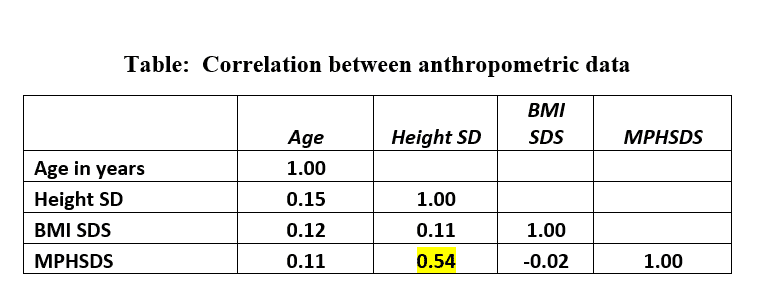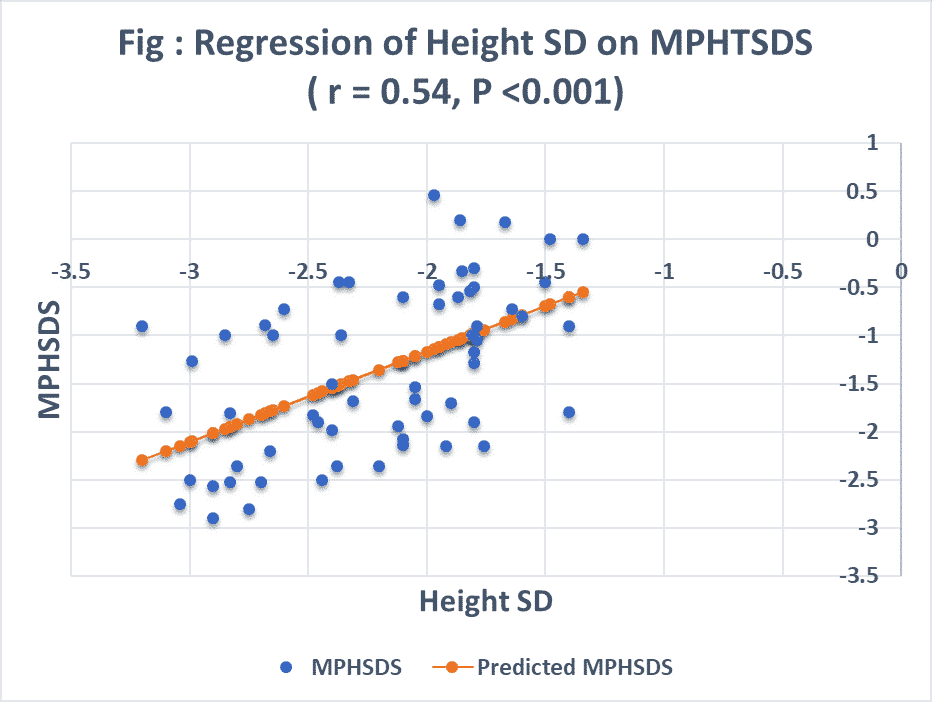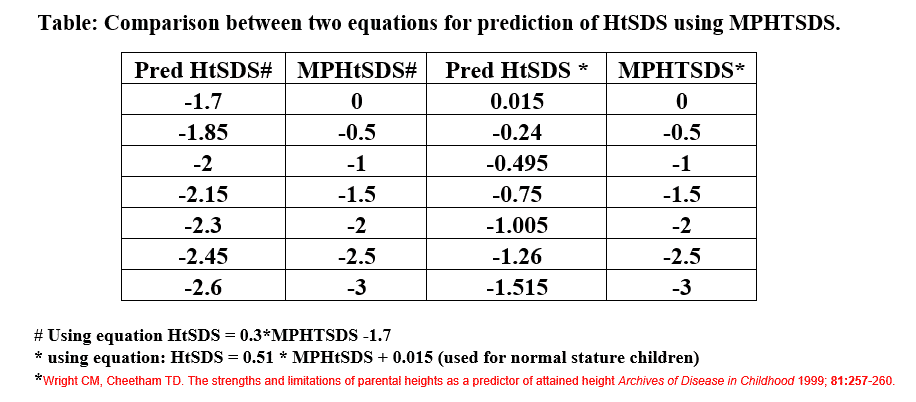
The Use of Mid-Parental Heights in the Prediction of Attained Height in Short Children with Normal Growth Hormone Secretion
2Pediatric, Sidra Medicine, Doha, Qatar
3Pediatric Endocrine, Alexandria University, Alexandria, Egypt
Introduction: Mid-parental heights SDS(MPHSDS) widely used to assess child’s growth. However, the method in use vary, and most make no allowance for extremes parental height.
Aim: To examine actual distribution of MPH and the relation with their children’s heights in random sample of short children (n=100), HtSDS<-2, with normal BMI and growth hormone secretion.
Subjects and methods: The heights of 100 short prepubertal children aged 7-11years, with normal BMI, peak GH response provocation (>7ng/dl) and normal insulin-like growth factor-1 (IGF1) concentration (IGFSDS =1.2+/-1.3) compared with their MPHSDS.
Results and discussion: Short children (10.7 +/-1.3 years), (58 males) had HtSDS=-2.18 +/-0.5 and their MPHTSDS =-1.34 +/-0.86. Difference between MPHSDS and children’s HtSDS showed that 82% of children’s heights fall within -1.5 SDS of their MPHSDS and 68% fall within -1 SDS of their MPHSDS confirming that the currently used range (±2 centile spaces). However, the distribution of children’s heights around MPH varied through their parent’s height distribution. Children of short parents were similarly short or shorter than their parents at this prepubertal age. While children for normal stature parents MPHTSDS >-1 (-0.4+/-0.33) were widely shorter, HtSDS= (-1.92 +-/0.45), than their parents. Children HtSDS correlated significantly with MPHTSDS (r– 0.54, P<0.0001). The regression equation between children’s HtSDS and MPH SDS as follows: child’s height SDS =(0.3xMPHTSDS-1.7)
Conclusion:
Mid-parental height can provide useful guidance to expect height centile for short children of short parents but not for short children for normal stature parents. Another regression equation is suggested for prediction of height in short children using their MPH.



Powered by Eventact EMS